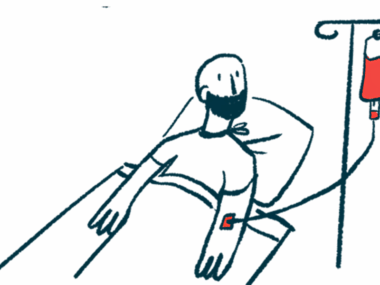Thymus removal surgery generally safe for MG patients over 65: Study
But thymectomy risks and benefits should be assessed for older patients
Written by |

Thymus removal surgery is generally safe for the majority of elderly people who have myasthenia gravis (MG), a study in China found.
In fact, all patients ages 65 and older in the study were safely discharged and did not need to stay longer in the hospital.
Nonetheless, according to researchers, surgery should be considered on an individual basis, given that its risks are higher for older patients compared with younger ones.
“After careful evaluation and full preparation before surgery, close observation during and after surgery, and timely response to changes in the condition, the vast majority can safely go through the perioperative period,” typically the time of hospitalization, the researchers wrote.
The study, “Surgical safety analysis and clinical experience sharing of myasthenia gravis patients aged 65 and over,” was published in the journal Thoracic Cancer.
Investigating the risks, with age, of thymus removal surgery
MG occurs when the body mistakenly attacks certain proteins important for nerve-muscle communication, leading to symptoms of muscle weakness and fatigue.
Many people with MG have an enlarged thymus, and about 10% to 15% have tumors, called thymomas, in the organ that are usually benign. It is believed that the thymus, an organ of the immune system, triggers or helps maintain the production of self-reactive antibodies that drive MG.
Thymectomy, a surgery to remove the thymus, is a long-term treatment for MG that can help reduce the production of such self-reactive antibodies. In general, the surgery is recommended for patients with thymomas and those younger than 60.
Many surgeons believe that for older patients, surgery indications should be stricter, and that thymectomy should only be seen as an option if there are certain factors at play. These include thymus abnormalities, rapid disease progression, and ineffective medical treatment.
Although many elderly patients may benefit from surgery, many surgeons are reluctant to perform the procedure. This is likely due to the higher incidence of cardiovascular disease and other conditions that contribute to a reduced tolerance to anesthesia and surgery in older people.
To evaluate the risks of thymectomy with age, a team of researchers in China now evaluated the surgical safety of the procedure in 564 MG patients with thymus abnormalities. Among them, 292 were men and 273 were women; the average age was 47.1 years. All underwent thymus removal surgery at a hospital in Beijing from November 2011 to March 2022.
Patients were divided into two groups depending on their age: one group included 481 patients younger than 65, while the other comprised 84 people age 65 or older. Males accounted for a larger proportion of individuals in the older age group, whereas nearly all patients in the younger age group were female.
Elderly patients had worse lung function compared with younger ones, as assessed by several lung function parameters, including forced expiratory volume in one second (FEV1), which measures the total amount of air one can exhale in one second.
The time to remove surgical drains was longer in older patients, with 50% of them requiring more than three days to have their drains removed, compared with 30% of younger patients. Drainage volume also was higher in elderly patients, with 44% of them having more than 800 mL of fluid drained in the first three days compared with 27% of younger patients.
This “might be caused by the fact that anticoagulants are far more likely to to be used before and after surgery in the elderly than the young group. However, these did not result in longer hospital stays or other adverse outcomes,” the researchers wrote.
Although elderly patients have a higher risk of surgery, and the incidence and severity of postoperative complications were higher than young patients, all elderly patients were safely discharged, and there was no prolongation of hospital stay.
The American Society of Anesthesiologists (ASA) score also tended to be higher in elderly MG patients, indicating a poorer overall health status. Complications also were more likely to occur after surgery in older patients than in younger ones (32% vs. 17%).
No deaths in 10 years of thymus removal surgery
A statistical analysis combining the effects of different variables found that a lower predicted diffusion lung capacity for carbon monoxide (DLCO) was the only independent risk factor for post-operative complications. DLCO measures the lungs’ ability to transfer inhaled gases into the bloodstream; when it is below the normal range, it may indicate the presence of lung disease.
According to researchers, these findings demonstrate “the surgical risk for elderly MG patients is higher than that of young people.” As such, “surgical indications should be considered on an individual basis for each elderly MG patient,” they wrote.
However, the results showed that thymectomy is generally safe for patients who are age 65 or older.
“In the past 10 years, there have been no perioperative deaths in MG patients at our center. Although elderly patients have a higher risk of surgery, and the incidence and severity of postoperative complications were higher than young patients, all elderly patients were safely discharged, and there was no prolongation of hospital stay,” the researchers wrote.
The team also highlighted several key points to assess when evaluating elderly patients before surgery. These included carefully checking patients for cardiovascular diseases and keeping MG symptoms well-controlled to ensure that patients are in the best possible health before undergoing the procedure.








Leave a comment
Fill in the required fields to post. Your email address will not be published.